Data Data Everywhere!
In the modern world, where brands are trying to reach out to prospective customers at almost all junctures (and that too in a creative manner), it is criminal to not have a good digital marketing action plan. Although, Digital Marketing has evolved over the years in terms of content delivery and the kind of channels; the principles still remain the same. And the most important aspect of marketing is – ‘Know Your Customer’.
The brand that understands it’s customers the best, wins the battle. The consumer touchpoint data being generated on these digital marketing platforms are nothing short of a gold mine. This data when analyzed properly can give you an edge over your competitors.
‘The only drawback is that digital marketers have access to this data in chunks on individual platforms and not all together in one view’.
And this is where knowledge of data science can give you an edge.
How Can Data Science help in Digital Marketing?
The application of data science can be divided into following 4 parts:
1. Extracting Data from all AdTech Systems
2. Visualizing Data
3. Reporting Actionable Insights from Data
4. Forecasting / Predicting future Campaign Performance
1. Extracting Data from all AdTech Systems
The process of extracting data and then aggregating it at one place is called ETL (Extract Transform Load) in data science lingo. ETL can be either manual or automated.
Manual ETL is nothing but exporting campaign performance data in a .csv format from individual marketing channel like Facebook Ads or AdWords dashboard.
To export campaign data from Facebook Ads click on the Reports Tab > Export table data option
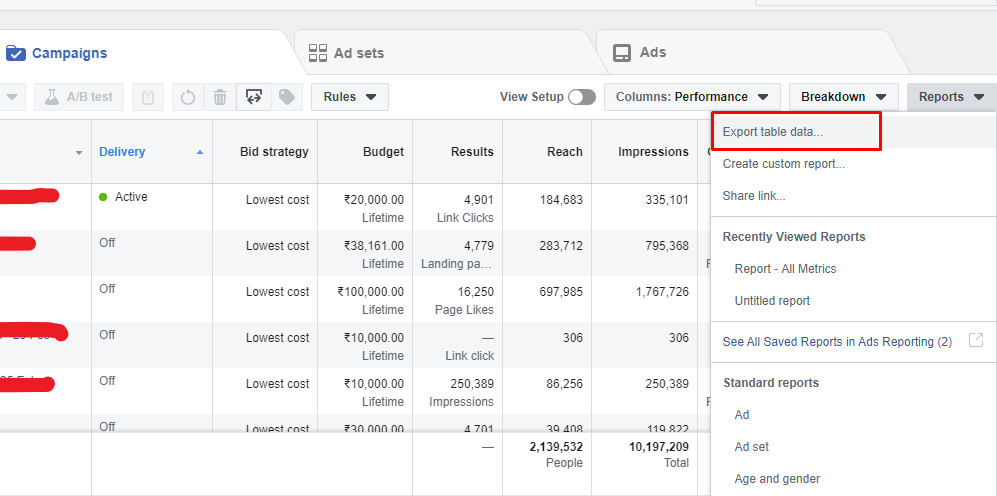
To export campaign data from AdWords click on Download > Excel .csv option
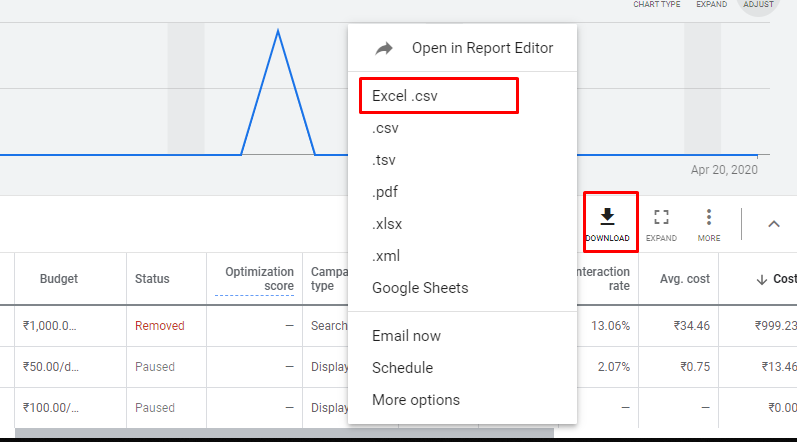
The disadvantage of this technique though is that you need to manually export the data whenever you want to do an analysis. For small marketing agencies this is a favorable option but for large volume agencies we need to use Automated ETL.
Automated ETL utilizes APIs made available by each channel.
Facebook has Facebook Graph API, Google Ads has AdWords API, Google Analytics has Analytics Reporting API and so on.. The core function is to automate the process.
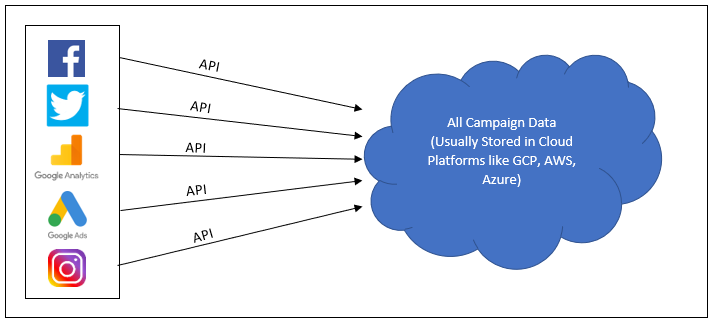
2. Visualizing Data
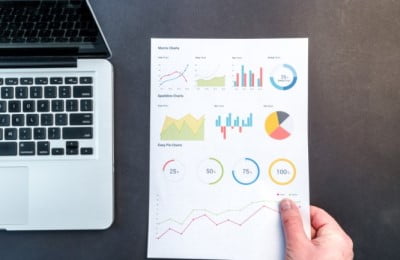
Since marketing data consists of various consumer touchpoints and metrics, it gets very overwhelming to look at the data in an excel. Humans have a better intuitive sense of understanding things when it is presented to us in an arranged visual form. Hence, making graphs and charts of important media metrics can help us find insights and patterns within this huge amount of data that we have collected. A collection of graphs representing all-important Key Performance Indicators (KPIs) at one place is called a dashboard.
The are many tools that data scientists use to make dashboards:
1. Matplotlib and Seaborn libraries in Python
2. Tableau
3. Power BI
4. Google Data Studio
5. Datorama
3. Reporting Actionable Insights from Data
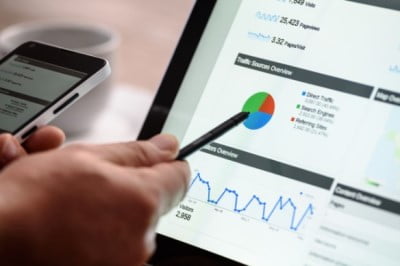
On analyzing the graphs, you can see various trends and patterns in campaign performance. This data can be visualized in various permutations and combinations. This process is known as exploratory data analysis (EDA) in data science terms.
Find Dependencies Between Various Marketing Metrics
Another important insight that data science can provide digital marketers is the correlation between various metrics. For example what is the impact of increasing the campaign budget by 5% on impressions, clicks, conversions etc. You can take better decisions once you have solid data to back you claim.
You can also judge the impact of using different ad copies on your conversion variable. Hence, giving your content team a good idea about the kind of content that appeals to the end user segment.
Various metrics like time of day, audience parameters like age, gender, location, interest, keyword selection, quality score etc. can be studied on a one-to one basis as well as a cumulative basis. A lot of interesting insights can be derived out of this analysis. Once you have insights, they can be utilized in your campaign planning and execution at various stages of the funnel.
4. Forecasting / Predicting future campaign performance

How about playing GOD and being already aware of what is about to happen in the future! Sounds Great right?
This is the power of data science. Feeding huge chunks of historical data to predictive statistical algorithms can help us in predicting the future behaviour of the customers so that digital marketers can be ready to take corrective actions and make changes to the campaigns.
Some of the analysis that can be performed on marketing data are:
1. Lead Scoring
2. Recency-Frequency-Monetary Analysis (RFM Analysis)
3. Churn Prediction
4. Optimizing Conversion Rate
5. Lifetime Value Prediction
6. Audience Segmentation
7. Sentiment Analysis of Audience: Read More
8. Future Traffic Prediction
9. Market Basket Analysis
10. Customer Analytics & A/B Testing
So, Data Science proves to be an important value-add to Digital Marketing. With competition sky rocketing amongst digital marketing agencies these days, I strongly vouch for all digital marketers to learn the practical aspects of data science.

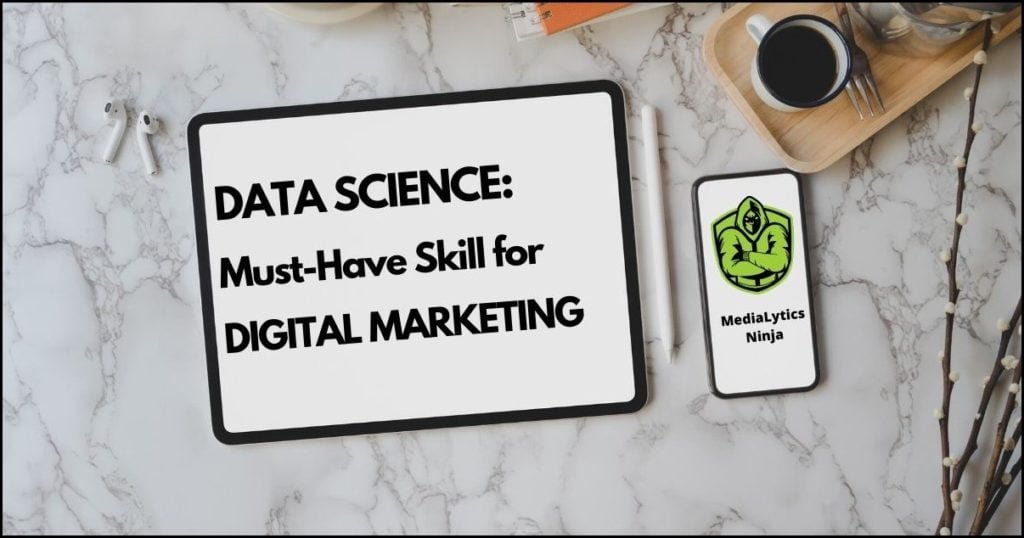
Great piece of info…
Info probably at it’s best. Just waiting for you guys to roll out these courses online now. Thanks!
Great Article
Really I understood the importance of data
Yes Eagerly waiting for new courses.
Its very useful to use Data Science in Digital Marketing. Thanks for such a wonderful course.
Best and simplest piece of information I have ever read about DS and DM..